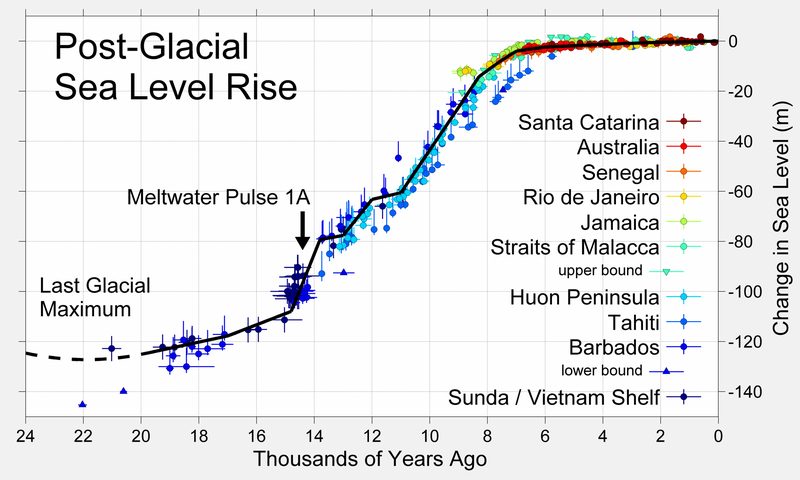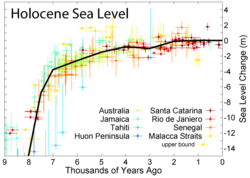Tiedosto:Post-Glacial Sea Level.png

Tämän esikatselun koko: 800 × 480 kuvapistettä. Muut resoluutiot: 320 × 192 kuvapistettä | 1 024 × 615 kuvapistettä | 1 280 × 768 kuvapistettä | 1 813 × 1 088 kuvapistettä.
Alkuperäinen tiedosto (1 813 × 1 088 kuvapistettä, 371 KiB, MIME-tyyppi: image/png)
Tiedoston historia
Päiväystä napsauttamalla näet, millainen tiedosto oli kyseisellä hetkellä.
| Päiväys | Pienoiskuva | Koko | Käyttäjä | Kommentti | |
|---|---|---|---|---|---|
| nykyinen | 19. maaliskuuta 2019 kello 02.36 |  | 1 813 × 1 088 (371 KiB) | Dragons flight | Higher resolution version |
| 25. marraskuuta 2016 kello 20.26 |  | 526 × 359 (19 KiB) | A876 | edited to correct spelling. (also OptiPNG.) | |
| 27. joulukuuta 2005 kello 05.20 |  | 526 × 359 (23 KiB) | Angrense | Sea level variation during the last post-glacial period. Source:English version of Wikipedia. |
Tiedoston käyttö
Seuraavat 5 sivua käyttävät tätä tiedostoa:
Tiedoston järjestelmänlaajuinen käyttö
Seuraavat muut wikit käyttävät tätä tiedostoa:
- Käyttö kohteessa af.wikipedia.org
- Käyttö kohteessa ar.wikipedia.org
- Käyttö kohteessa ast.wikipedia.org
- Käyttö kohteessa beta.wikiversity.org
- Käyttö kohteessa be.wikipedia.org
- Käyttö kohteessa bg.wikipedia.org
- Käyttö kohteessa bn.wikipedia.org
- Käyttö kohteessa bo.wikipedia.org
- Käyttö kohteessa bs.wikipedia.org
- Käyttö kohteessa ca.wikipedia.org
- Käyttö kohteessa cs.wikipedia.org
- Käyttö kohteessa da.wikipedia.org
- Käyttö kohteessa da.wikibooks.org
- Käyttö kohteessa de.wikipedia.org
- Ozean
- Meeresspiegel
- Präboreal
- Atlantikum
- Subatlantikum
- Meeresspiegelanstieg seit 1850
- Schmelzwasserpuls 1A
- Flandrische Transgression
- Er Lannic
- Doggerland
- Wikipedia:Auskunft/Archiv/2010/Woche 01
- Subboreal
- Boreal (Klimastufe)
- Diskussion:Kontroverse um die globale Erwärmung/Archiv/005
- Benutzer:Zumthie/Fundstücke
- Diskussion:Storegga
- Letzteiszeitliches Maximum
- Allée couverte im Estuaire de la Quillimadec
- Passage Tomb auf Ringarogy Island
- Dolmen von Rostellan
- Allée couverte auf der Île Coalen
- Dolmen von Keroyal
Näytä lisää tämän tiedoston järjestelmänlaajuista käyttöä.



